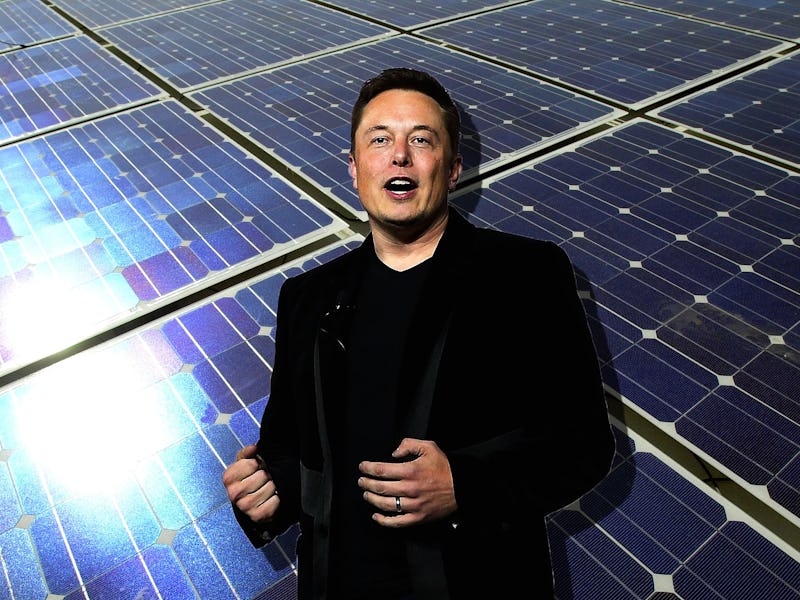Elon Musk’s Tesla is set to merge with solar energy company SolarCity, and during a call with investors on Tuesday, through answers with investment analysts, stitched together his vision for how a solar-powered, carbon-free house might look.
In Musk’s view, there will be a Tesla in every garage and solar panels on every roof — and a big ol’ Powerwall 2 home battery tying everything together. Vertical integration at its most pure.
Tuesday’s phone conference followed a SolarCity event on Friday night in which Musk showed off different types of Tesla solar panels for different types of homes on the set of Desperate Housewives. And coming up on November 17 is the shareholder meeting, the final day for SolarCity shareholders to vote on the proposed merger.
A Tesla Model 3 rolls out of a garage on a home that has solar panels in an event on Friday night.
The entrepreneur says that SolarCity’s roofs will perfectly complement the rest of Telsa’s offerings, and he envisions that they’ll eventually become commonplace. There was something weirdly exciting about the mundane nature of the real estate questions investors were throwing at Musk. For instance, homebuyers in the near future won’t have to worry about a deal falling through because of a preexisting solar roof contract. Rather, energy-providing solar roofs will be seen a normal, transferable asset that raises the value of a home. Musk said it was “like a kitchen remodel.”
A researcher asked Musk how many customers he thought would go for a roof, a Tesla car, and a Powerwall together, in what was called a “triple play.”
“I think that over time most customers are going to ask for all three,” Musk said. “Even if they don’t all at once.”
Lyndon R. Rive, the CEO of SolarCity, added that the main thing stopping people from getting solar roofs was the condition of their old, existing roofs. “It doesn’t make sense to put solar panels on a roof that is nearing the end of life,” he said.
Elon Musk.
The two executives said that solar panels would be essentially paid for by the consumer, and could be repurposed as needed. They also noted that different types of panels could work for different types of homes. For instance, panels on flat roofs might not need to be as pretty, because “there’s really no point in having something that’s beautiful from an aesthetic aspect if nobody can see it.”
Musk is bullish about the prospects of making SolarCity’s offerings a natural component of the Tesla way of life. “Tesla has around 170,000 approaching 180,000 customers all-in, so that looks like a pretty significant base to cross sell our products there,” Musk said.
During the call, Musk acknowledged that widespread adoption might be somewhat slow at first, but he’s hopeful, and hinted that he has ideas for a possible quadruple or quintuple play deal in the future as Tesla tosses more technology into the residence of the future.
On Friday, Musk showed off a Tesla solar tile during an event to demonstrate how he envisions solar roofs to work.
“There are additional products that I’d like to bring out that are I think people will find counterintuitive at first. And then find it obvious,” Musk said. “It would seem to be the pattern. It’s counterintuitive, it’s stupid, it’s never going to work. Now it’s obvious.”
Though Musk has visions of a bright future, Wall Street’s response to the plan was a little gloomy at this early stage. SolarCity and Tesla’s stock dropped 2.47 percent and 1.12 percent, respectively, in after-hours trading.
